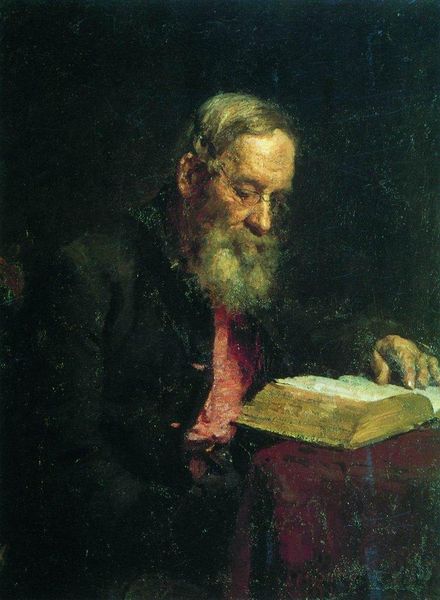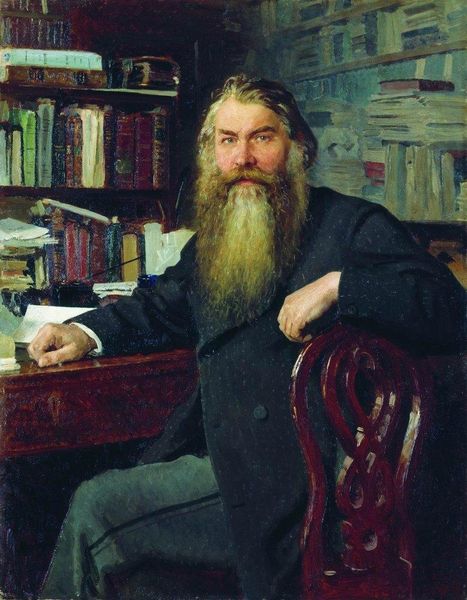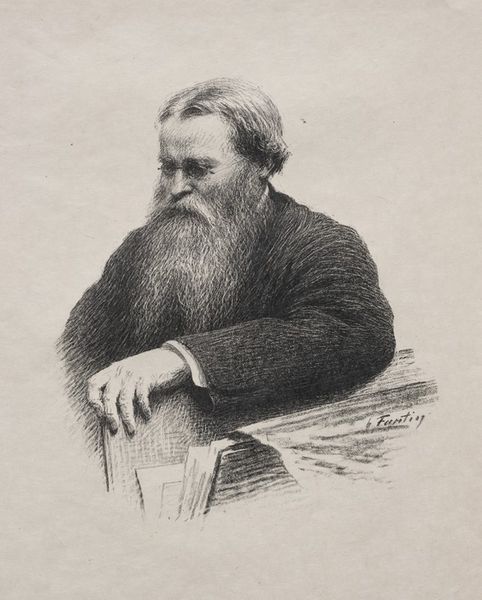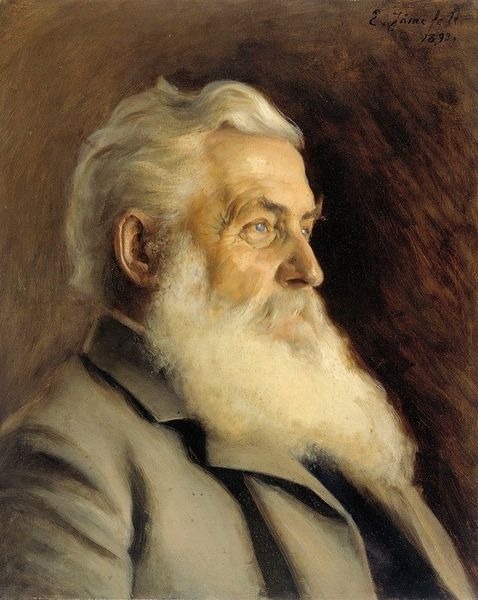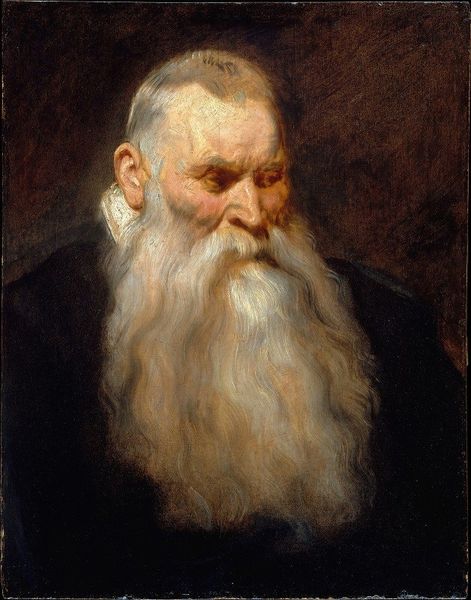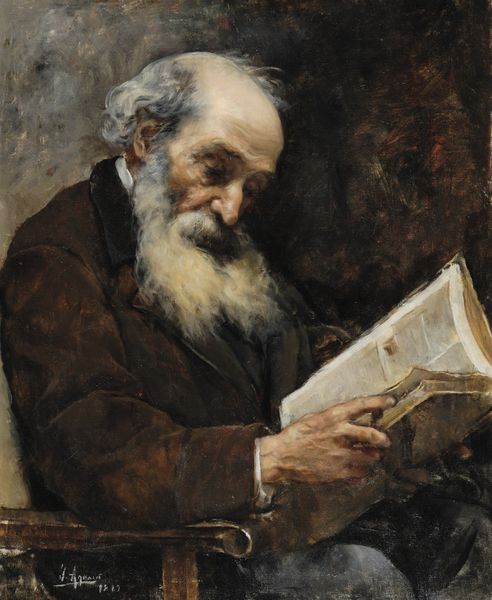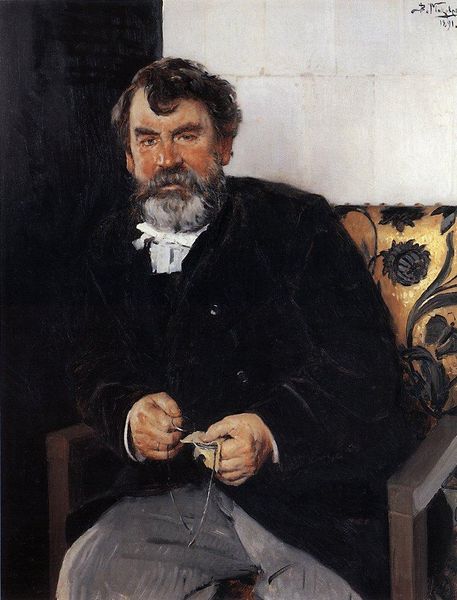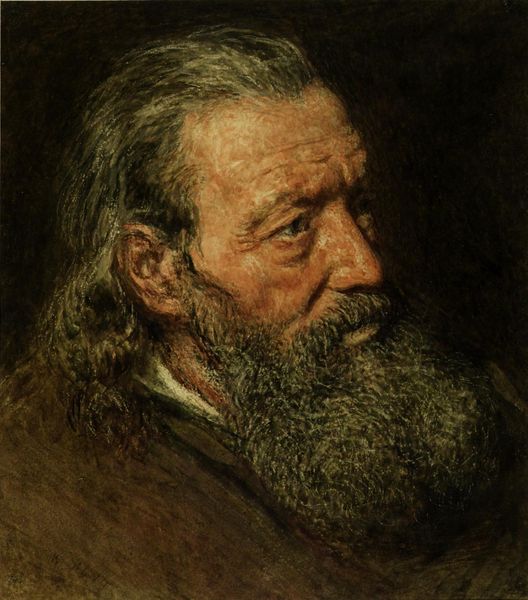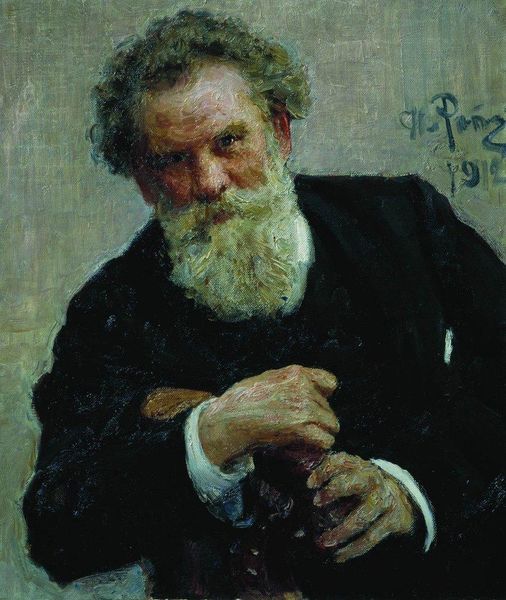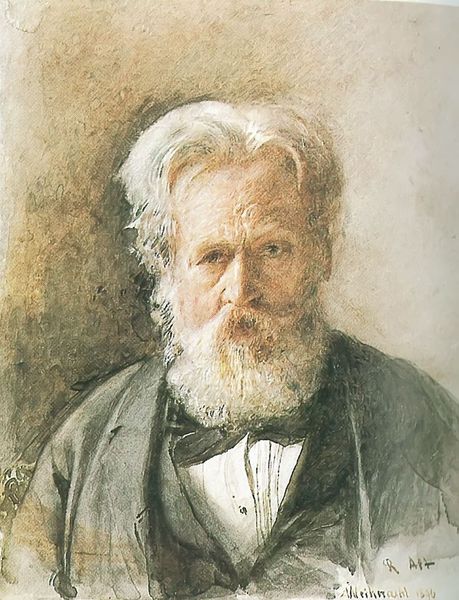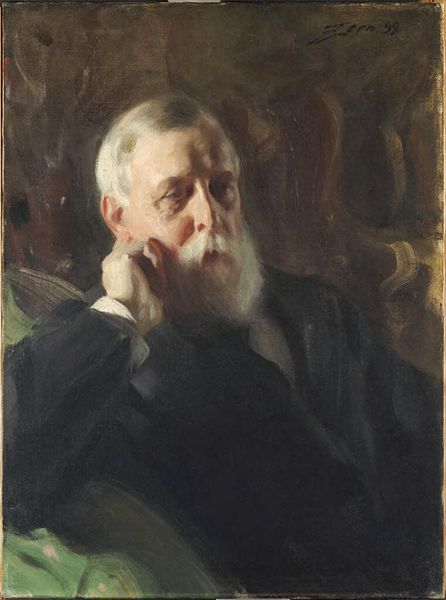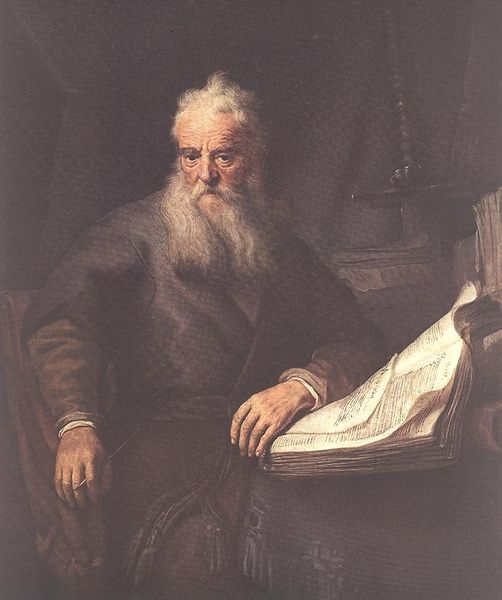
#
portrait
#
possibly oil pastel
#
oil painting
#
portrait reference
#
famous-people
#
male-portraits
#
acrylic on canvas
#
portrait head and shoulder
#
animal portrait
#
facial portrait
#
portrait art
#
fine art portrait
#
digital portrait
Copyright: Public domain
Editor: This is Nikolai Ge’s “Portrait of Leo Tolstoy,” painted in 1884. There's a real intensity to this image; it’s intimate, like we're catching Tolstoy in a private moment of deep concentration. How would you interpret this work? Curator: Well, Tolstoy was a figure who challenged the very foundations of Russian society. Ge, similarly, questioned artistic conventions. In this light, the portrait becomes less about simple representation and more about portraying a kindred spirit engaged in revolutionary thought. Editor: Revolutionary how? Curator: Look at Tolstoy's downward gaze, the weight of his ideas pressing down on him as he writes. Ge paints him not as a celebrated author, but as a man wrestling with complex moral and spiritual issues. It’s critical of the structures of power that demand conformity. How does the somber color palette add to this reading, do you think? Editor: It definitely adds to the feeling of gravity. Everything's muted; there are no distractions, it's just him and his work, locked in a struggle of thought. Were Ge and Tolstoy close? Curator: Absolutely. Ge admired Tolstoy's philosophy and his critiques of social injustice. Think about the role of art in reflecting and challenging social norms, and the responsibility of the artist in bearing witness to these struggles. Considering this, does this painting offer a form of solidarity? Editor: It does. It reframes Tolstoy from a literary icon to a man actively fighting for what he believes in, making it an artwork with social significance. Thank you. Curator: It's about situating these artistic moments within the churning socio-political landscapes from which they emerged, and understanding them as cultural commentaries. It’s been enlightening!
Comments
No comments
Be the first to comment and join the conversation on the ultimate creative platform.
